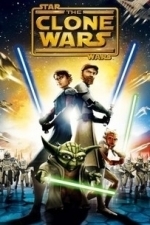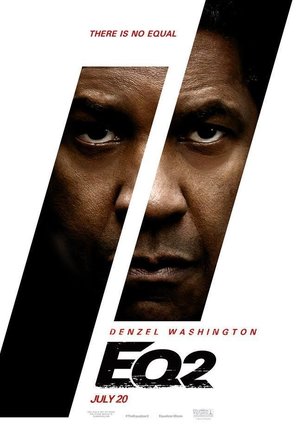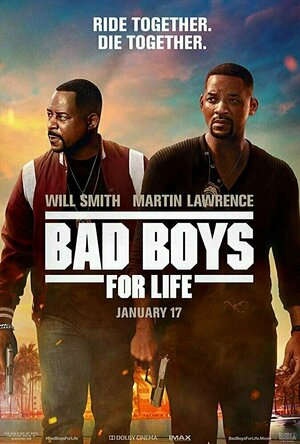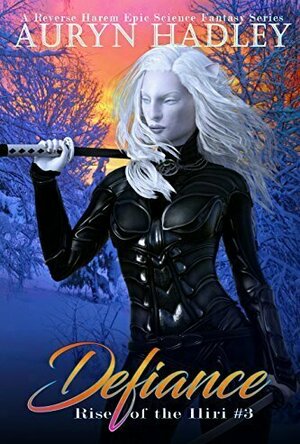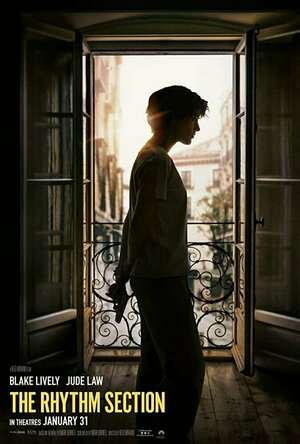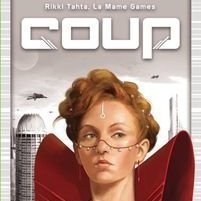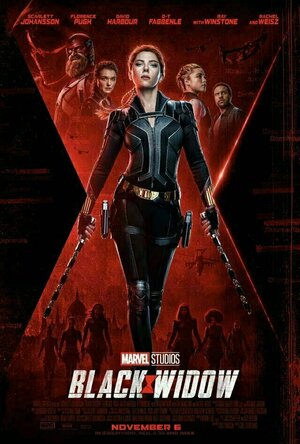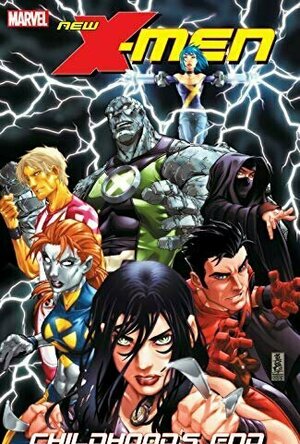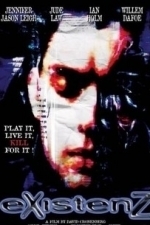Search
Search results
Gareth von Kallenbach (980 KP) rated Star Wars: The Clone Wars (2008) in Movies
Aug 14, 2019
For fans of the “Star Wars” saga, the notion of the Clone Wars has intrigued fans ever since it was first mentioned in 1977. Unfortunately fans had to wait until the Prequel Trilogy almost two decades later to lift the lid on the events of the war that changed the mythical galaxy far, far away.
There have been video games, books, and comics that dealt with some of the events, but since the film series focused on the start and end of the war, many believed that much of what transpired would remain a mystery.
Thankfully, creator George Lucas and a talented team of digital artists has set to the task of filling in the missing pieces in the form of a animated series which is scheduled to debut in the Fall.
The new series gets a cinematic boost with the theatrical release of “Star Wars: The Clone Wars”, which is a welcome treat to fans of the series. The film opens with the news that the son of gangster Jabba the Hutt has been kidnapped, and Obi Wan Kenobi, and Anakin Skywalker are tasked with rescuing the captured infant.
The Separatist forces under the leadership of Count Dooku, have restricted many of the main Hyperspace routes in the galaxy, and the Hutts control key routes that the Republic will need for troop deployments. The Jedi hope by rescuing Jabba’s son, they can secure a treaty with the Jabba which will allow them greater access to Hutt space and will keep the Hutts from supporting Dooku and his minions.
Unfortunately, Anakin and Obi Wan have their hands full leading a squad of Clone Troopers against a massive droid army as they attempt to hold out until reinforcements can arrive. After an impressive battle sequence, help finally arrives as does an unexpected surprise in the form of a young Jedi Padawan named Ahsoka.
Ahsoka informs Anakin that she has been assigned by Yoda to be his Padawan learner, and despite his misgivings, Anakin takes the talented yet young and naïve learner under his care.
Unknown to the Jedi, a larger and more sinister plot is underway and Dooku and his assassin Asaj Ventress are orchestrating a very deadly plan that will leave the fate of the galaxy hanging in the balance.
The film is a grand adventure and contains much of the ingredients that made the live action series a true juggernaut in cinema history. The film deftly mixes action, adventure, and humor with a story that is entertaining with solid pacing.
Matt Lanter does a satisfactory job of voicing Anakin and the cast does a great job of voicing the CGI recreations of the beloved characters.
The CGI effects are top rate and unlike the last films in the series never overshadow the characters and the story. The sound effects were equally impressive from the distinctive sound of the lightsabers and blasters, to the sound of the war machines, I soon found myself forgetting it was a cartoon, and instead saw only the Star Wars that I have loved since I first saw the original as a small boy.
While some may say that the film is little more than a glorified television Pilot, I prefer to look at it as a very welcome return to the big screen of the greatest Sci Fi series ever made.
There have been video games, books, and comics that dealt with some of the events, but since the film series focused on the start and end of the war, many believed that much of what transpired would remain a mystery.
Thankfully, creator George Lucas and a talented team of digital artists has set to the task of filling in the missing pieces in the form of a animated series which is scheduled to debut in the Fall.
The new series gets a cinematic boost with the theatrical release of “Star Wars: The Clone Wars”, which is a welcome treat to fans of the series. The film opens with the news that the son of gangster Jabba the Hutt has been kidnapped, and Obi Wan Kenobi, and Anakin Skywalker are tasked with rescuing the captured infant.
The Separatist forces under the leadership of Count Dooku, have restricted many of the main Hyperspace routes in the galaxy, and the Hutts control key routes that the Republic will need for troop deployments. The Jedi hope by rescuing Jabba’s son, they can secure a treaty with the Jabba which will allow them greater access to Hutt space and will keep the Hutts from supporting Dooku and his minions.
Unfortunately, Anakin and Obi Wan have their hands full leading a squad of Clone Troopers against a massive droid army as they attempt to hold out until reinforcements can arrive. After an impressive battle sequence, help finally arrives as does an unexpected surprise in the form of a young Jedi Padawan named Ahsoka.
Ahsoka informs Anakin that she has been assigned by Yoda to be his Padawan learner, and despite his misgivings, Anakin takes the talented yet young and naïve learner under his care.
Unknown to the Jedi, a larger and more sinister plot is underway and Dooku and his assassin Asaj Ventress are orchestrating a very deadly plan that will leave the fate of the galaxy hanging in the balance.
The film is a grand adventure and contains much of the ingredients that made the live action series a true juggernaut in cinema history. The film deftly mixes action, adventure, and humor with a story that is entertaining with solid pacing.
Matt Lanter does a satisfactory job of voicing Anakin and the cast does a great job of voicing the CGI recreations of the beloved characters.
The CGI effects are top rate and unlike the last films in the series never overshadow the characters and the story. The sound effects were equally impressive from the distinctive sound of the lightsabers and blasters, to the sound of the war machines, I soon found myself forgetting it was a cartoon, and instead saw only the Star Wars that I have loved since I first saw the original as a small boy.
While some may say that the film is little more than a glorified television Pilot, I prefer to look at it as a very welcome return to the big screen of the greatest Sci Fi series ever made.
Gareth von Kallenbach (980 KP) rated The Equalizer 2 (2018) in Movies
Jul 8, 2019
Ex-government assassin Robert McCall (Denzel Washington) takes it upon himself to right the wrongs of those who have been exploited. He spends his days driving a Lyft around making chance encounters with people. When one of those people is in need he will go to any length to dispense justice. His brand of justice is brutal and swift but he always give the oppressors the chance to redeem themselves. He does this for people passing though his life but when his best friend, and one of the only former colleges to know his alive, Susan Plummer (Melissa Leo) is killed while on an investigation he sets out to dispatch vengeance rather than justice. He will stop at nothing to find out why his friend was murdered and eliminate those responsible. Robert must first reveal that he is still alive to his former partner Dave York (Pedro Pascal) so he can have access to the investigation. Once he has access the pair will try and find the killers and exact revenge. That is before the killers find them.
This film is the follow up to 2014’s The Equalizer. It returns both Washington and Leo as well as Director Antoine Fuqua (Shooter, South Paw) and Writer Richard Wenk (Jack Reacher: Never Go Back, 16 Blocks) and Bill Pullman, as Brian Plummer. The action scenes in the beginning of the film are really well done. Maybe a spoiler here so caution, the climatic fight scene at the end is less well done and because it is set in a hurricane a lot of it is blurry and hard to follow. It puts you in the setting of the weather but because the action is hand to hand you can really miss a lot of what is going on. It didn’t really work for me personally. The story started out really how I expected and followed the first films story of McCall helping out those who had no other options. This part felt very much like the first film but not redundant. However, it really slowed down when it got into the main story of the film. This part really seemed overly predictable and unoriginal. You, or rather I, could see how the entire movie was laid out and the inevitable conclusion with very few plot twist. This made pace of the film is tough for me. Really action packed at the beginning and then really slow drawn out drama in the middle.
On its own this film is an okay movie. One of many action/crime/mystery films that are made each year. It didn’t really do a good job of distinguishing itself from the rest of the genre. But fans of this type of movie can enjoy how it is heartfelt and warm at times and bloody and action packed at others. The end I discussed above I was not a fan of. Also there is the issue of when you compare it to the original film it really is lacking some key things that the made the first film a success. The villain in this film really leaves something to be desired while the first film had a pretty good antagonist. The pace of the first film was much better and the story flowed more naturally. Sometimes it is really hard to recreate something and I think this film falls way short.
This film is the follow up to 2014’s The Equalizer. It returns both Washington and Leo as well as Director Antoine Fuqua (Shooter, South Paw) and Writer Richard Wenk (Jack Reacher: Never Go Back, 16 Blocks) and Bill Pullman, as Brian Plummer. The action scenes in the beginning of the film are really well done. Maybe a spoiler here so caution, the climatic fight scene at the end is less well done and because it is set in a hurricane a lot of it is blurry and hard to follow. It puts you in the setting of the weather but because the action is hand to hand you can really miss a lot of what is going on. It didn’t really work for me personally. The story started out really how I expected and followed the first films story of McCall helping out those who had no other options. This part felt very much like the first film but not redundant. However, it really slowed down when it got into the main story of the film. This part really seemed overly predictable and unoriginal. You, or rather I, could see how the entire movie was laid out and the inevitable conclusion with very few plot twist. This made pace of the film is tough for me. Really action packed at the beginning and then really slow drawn out drama in the middle.
On its own this film is an okay movie. One of many action/crime/mystery films that are made each year. It didn’t really do a good job of distinguishing itself from the rest of the genre. But fans of this type of movie can enjoy how it is heartfelt and warm at times and bloody and action packed at others. The end I discussed above I was not a fan of. Also there is the issue of when you compare it to the original film it really is lacking some key things that the made the first film a success. The villain in this film really leaves something to be desired while the first film had a pretty good antagonist. The pace of the first film was much better and the story flowed more naturally. Sometimes it is really hard to recreate something and I think this film falls way short.
Lee (2222 KP) rated Bad Boys for Life (2020) in Movies
Jan 20, 2020
The first Bad Boys movie came out in 1995, with the second arriving in 2003. So, 17 years on and these Miami bad boys are sure to be showing signs of age, following a career of fast cars and extreme action. Thankfully, Bad Boys for Life acknowledges that fact, even if we do get to hear the phrase "we're getting too old for this shit", or variations of, on many occasions throughout. Marcus Burnett (Martin Lawrence) is becoming a grandfather, keen to move on from being a bad boy in order to try and become a "good man" instead. Meanwhile, Mike Lowrey (Will Smith) isn't quite there just yet, continuing to try and live his shallow bad boy life at full throttle, dying his greying goatee beard in denial. When Mike becomes the target for a badass Mexican drug-lord (Kate del Castillo) and her ruthless son, his past comes back to haunt him and both boys have no choice but to get back together in order to take down the bad guys one last time.
OK, full disclaimer - I haven't seen Bad Boys and I haven't seen Bad Boys II. I probably wouldn't have been concerned about seeing this third installment either if I'm honest, but I found myself with a couple of hours to kill in London over the weekend, with Bad Boys for Life being literally the only movie that I hadn't seen which was showing at a convenient time. General opinion online so far seems to be that this is a fairly decent entry into the franchise though, and not necessarily something where you needed to have seen the previous movies in order to enjoy, so I decided to give it a shot. Consequently, there may be things about this movie that fans of the series will be happy to see or that they will be disappointed to see, but which I can't really comment on. I was heading into this like it was a standalone movie.
So, with Burnett trying to adjust to a life of relaxation at home, getting under his wife's feet in the process, it's up to Lowrey to tackle the assassin threat. However, due to him being one of their targets, he's forced to join the AMMO squad as a consultant. AMMO are Miami PD's elite team, utilising technology to track and monitor high-profile criminals, and the majority of the team are all considerably younger than Lowrey too. To them, Lowrey is just the old man that would rather shoot first and ask questions later, and it's not long before a frustrated Lowrey is disobeying orders, taking charge and introducing the team to some of his Bad Boy ways.
As far as buddy cop action movies go, Bad Boys for Life was an absolute blast. I've seen reviewers negatively describe the impact that Michael Bay had on the last Bad Boys movie with his over the top action mayhem style of film making. However, this time around, new co-directors Bilall Fallah and Adil El Arbi are in charge (although Bay does have a small cameo in the movie!) and while the action is still frenetic at times, it's also a lot more coherent too. The pacing in Bad Boys for Life felt spot on and with a good mix of humour, some decent villains and some fast paced inventive action that you can actually follow, it all makes for an enjoyable ride.
OK, full disclaimer - I haven't seen Bad Boys and I haven't seen Bad Boys II. I probably wouldn't have been concerned about seeing this third installment either if I'm honest, but I found myself with a couple of hours to kill in London over the weekend, with Bad Boys for Life being literally the only movie that I hadn't seen which was showing at a convenient time. General opinion online so far seems to be that this is a fairly decent entry into the franchise though, and not necessarily something where you needed to have seen the previous movies in order to enjoy, so I decided to give it a shot. Consequently, there may be things about this movie that fans of the series will be happy to see or that they will be disappointed to see, but which I can't really comment on. I was heading into this like it was a standalone movie.
So, with Burnett trying to adjust to a life of relaxation at home, getting under his wife's feet in the process, it's up to Lowrey to tackle the assassin threat. However, due to him being one of their targets, he's forced to join the AMMO squad as a consultant. AMMO are Miami PD's elite team, utilising technology to track and monitor high-profile criminals, and the majority of the team are all considerably younger than Lowrey too. To them, Lowrey is just the old man that would rather shoot first and ask questions later, and it's not long before a frustrated Lowrey is disobeying orders, taking charge and introducing the team to some of his Bad Boy ways.
As far as buddy cop action movies go, Bad Boys for Life was an absolute blast. I've seen reviewers negatively describe the impact that Michael Bay had on the last Bad Boys movie with his over the top action mayhem style of film making. However, this time around, new co-directors Bilall Fallah and Adil El Arbi are in charge (although Bay does have a small cameo in the movie!) and while the action is still frenetic at times, it's also a lot more coherent too. The pacing in Bad Boys for Life felt spot on and with a good mix of humour, some decent villains and some fast paced inventive action that you can actually follow, it all makes for an enjoyable ride.
Lyndsey Gollogly (2893 KP) rated Defiance (Rise of the Iliri #3) in Books
Mar 3, 2020
Contains spoilers, click to show
HER ONLY CHOICE IS TO CHANGE HER WORLD…
Salryc Luxx has come a long way in just four years, from slave to conscript, to elite Black Blade assassin, rising rapidly as her extraordinary abilities are revealed. Promoted to lieutenant after capturing a valuable shipment of metals and laying waste to the invading force, she and Cyno, her partner (in war and love), have been entrusted with a dangerous mission: to assassinate the King of Anglia and the five nobles in line for the throne, leaving the path to ascension clear for their own leader.
That’s one side of the story. The other is that she and Cyno have been assigned this suicide mission as Parliament’s first pass at removing the iliri taint from the military. Either way, without the strength of allies, the Conglomerate of Free Citizens cannot turn back the invaders, whose goal is to wipe out the whole iliri species, so Sal and Cyno are the only hope of ending the continental war devastating their species. Traveling for months, they are so far away from their home base that they’re beyond the mental link that connects the pack. They remain committed to their mission—and to each other, but… unhappily disturbed. They can only hope their separation from the pack bring them closer together. But the danger is, in the absence of the pack, their bond will wither.
A kind deed, helping what they take to be a wounded animal, leads to the discovery of their true nature, to strengthening and re-energizing their pack, and to a surprising alliance that offers hope for the future. The wounded animal, they learn, is a graour wolf, a species of ferocious warriors with language and traits nearly identical to iliri. When two of them ask to join her pack, Sal recruits them as Black Blades and the iliri are no longer the only dog in the fight for iliri freedom.
But Anglia is nothing like the Conglomerate of Free Citizens. Anglians discriminate based on gender, not species. Iliri are thought to be just a myth--until Sal shows her face. To convince the king and his council that yes, a woman really can be a soldier, she's going to have to make her own rules. The enemy is moving. She doesn't have time to deal with outdated court manners.
As the defiance of an entire species rises up in her, she really has no choice—she’ll just have to change the world.
Women readers will thrill to the reverse harem idea that pushes the boundaries of epic fantasy in this second world series that may remind some of Avatar without the scary beasts; or even Game Of Thrones, but happier, with more color—and a dazzling female protagonist. Fans of Anne McCaffrey’s Dragonriders of Pern will find Sal’s planet Ogun a thrilling destination for their next fantasy fix
They just keep getting better! Sal and Cyno are out on their own and they are kicking up a storm! We get to meet the Graour who the Iliri are descended from! We get a chance to see a whole new world building. I love the new characters and you are with them every step of the way on the battlefield it's also such a good feeling when the black blades are all back together and loving their new pack mates. It was only a matter of time before Cyno became her number 1 I'm glad Blaec took it well. Looking forward to book 4!
Salryc Luxx has come a long way in just four years, from slave to conscript, to elite Black Blade assassin, rising rapidly as her extraordinary abilities are revealed. Promoted to lieutenant after capturing a valuable shipment of metals and laying waste to the invading force, she and Cyno, her partner (in war and love), have been entrusted with a dangerous mission: to assassinate the King of Anglia and the five nobles in line for the throne, leaving the path to ascension clear for their own leader.
That’s one side of the story. The other is that she and Cyno have been assigned this suicide mission as Parliament’s first pass at removing the iliri taint from the military. Either way, without the strength of allies, the Conglomerate of Free Citizens cannot turn back the invaders, whose goal is to wipe out the whole iliri species, so Sal and Cyno are the only hope of ending the continental war devastating their species. Traveling for months, they are so far away from their home base that they’re beyond the mental link that connects the pack. They remain committed to their mission—and to each other, but… unhappily disturbed. They can only hope their separation from the pack bring them closer together. But the danger is, in the absence of the pack, their bond will wither.
A kind deed, helping what they take to be a wounded animal, leads to the discovery of their true nature, to strengthening and re-energizing their pack, and to a surprising alliance that offers hope for the future. The wounded animal, they learn, is a graour wolf, a species of ferocious warriors with language and traits nearly identical to iliri. When two of them ask to join her pack, Sal recruits them as Black Blades and the iliri are no longer the only dog in the fight for iliri freedom.
But Anglia is nothing like the Conglomerate of Free Citizens. Anglians discriminate based on gender, not species. Iliri are thought to be just a myth--until Sal shows her face. To convince the king and his council that yes, a woman really can be a soldier, she's going to have to make her own rules. The enemy is moving. She doesn't have time to deal with outdated court manners.
As the defiance of an entire species rises up in her, she really has no choice—she’ll just have to change the world.
Women readers will thrill to the reverse harem idea that pushes the boundaries of epic fantasy in this second world series that may remind some of Avatar without the scary beasts; or even Game Of Thrones, but happier, with more color—and a dazzling female protagonist. Fans of Anne McCaffrey’s Dragonriders of Pern will find Sal’s planet Ogun a thrilling destination for their next fantasy fix
They just keep getting better! Sal and Cyno are out on their own and they are kicking up a storm! We get to meet the Graour who the Iliri are descended from! We get a chance to see a whole new world building. I love the new characters and you are with them every step of the way on the battlefield it's also such a good feeling when the black blades are all back together and loving their new pack mates. It was only a matter of time before Cyno became her number 1 I'm glad Blaec took it well. Looking forward to book 4!
Emma @ The Movies (1786 KP) rated The Rhythm Section (2019) in Movies
Mar 5, 2020
The Rhythm Section popped up almost out of nowhere when it hit screens. Seeing the cast line-up I was very interested in seeing what it had to offer.
Stephanie has been a broken woman ever since her family died in a plane crash. The situation would be tough for anyone to deal with but it's made worse by the fact she was supposed to be on the plane too. Life in tatters, addicted to drugs and turning tricks for money she's all but given up on life. That's when Proctor appears.
Proctor is an investigative journalist who is tracking down the people responsible for the tragedy. He takes her in and she paws over his evidence. With a new found rage she goes off on her own, but actions have consequences and it's a steep learning curve.
There is something in The Rhythm Section, the story has a definite spark, but this final product didn't hit the right note for me. It's a classic story of revenge but the film doesn't seem to make much out of it. Littering it with flashbacks to fill in story and attempt to get us in Stephanie's head just adds to the jumpiness throughout. That jumpiness wasn't just reserved for the story, I noted that the camera movements early on were bizarre, I imagine in an effort to emulate her physical and mental state, but it was particularly jarring to watch.
The Rhythm Section seems to have no real way to follow the passage of time, which I feel was a mistake as it would have helped to make things more believable. Somehow B (Law) managed to get Stephanie off drugs, markedly improve her fitness levels and train her to be an (admittedly mediocre) assassin. With some concept of time elapsing I might have been on board with that transformation.
All that training seems to be for nought as she mainly survives off dumb luck during her travels. Her natural luck would also explain how she managed to capture the only bit of information she needed at the beginning of the film to find Proctor's well trained and secret source.
Law and Lively had some good moments in her training montage. There was some humour and friendship, of a sort, but the combative nature of both characters outside of that felt strained and neither appeared comfortable in the role. Sterling K. Brown playing Mark Serra seemed to be the most at home in the role, there was a spark there that gave him a confidence in what he was doing.
With a script written by the author of the source material I'm at a bit of a loss, this scenario should mean that it's a proper representation of the book but I'm left with little desire to experience any of the other three stories in this series having seen Rhythm Section.
As I said, there feels like there's something in this idea that would have made a great film, but it feels rushed and a little confused. The film ends in a way that could see a sequel, and that is possible given the other books in the series, but I can't see it progressing beyond one film off the back of this.
Originally posted on: https://emmaatthemovies.blogspot.com/2020/03/the-rhythm-section-movie-review.html
Stephanie has been a broken woman ever since her family died in a plane crash. The situation would be tough for anyone to deal with but it's made worse by the fact she was supposed to be on the plane too. Life in tatters, addicted to drugs and turning tricks for money she's all but given up on life. That's when Proctor appears.
Proctor is an investigative journalist who is tracking down the people responsible for the tragedy. He takes her in and she paws over his evidence. With a new found rage she goes off on her own, but actions have consequences and it's a steep learning curve.
There is something in The Rhythm Section, the story has a definite spark, but this final product didn't hit the right note for me. It's a classic story of revenge but the film doesn't seem to make much out of it. Littering it with flashbacks to fill in story and attempt to get us in Stephanie's head just adds to the jumpiness throughout. That jumpiness wasn't just reserved for the story, I noted that the camera movements early on were bizarre, I imagine in an effort to emulate her physical and mental state, but it was particularly jarring to watch.
The Rhythm Section seems to have no real way to follow the passage of time, which I feel was a mistake as it would have helped to make things more believable. Somehow B (Law) managed to get Stephanie off drugs, markedly improve her fitness levels and train her to be an (admittedly mediocre) assassin. With some concept of time elapsing I might have been on board with that transformation.
All that training seems to be for nought as she mainly survives off dumb luck during her travels. Her natural luck would also explain how she managed to capture the only bit of information she needed at the beginning of the film to find Proctor's well trained and secret source.
Law and Lively had some good moments in her training montage. There was some humour and friendship, of a sort, but the combative nature of both characters outside of that felt strained and neither appeared comfortable in the role. Sterling K. Brown playing Mark Serra seemed to be the most at home in the role, there was a spark there that gave him a confidence in what he was doing.
With a script written by the author of the source material I'm at a bit of a loss, this scenario should mean that it's a proper representation of the book but I'm left with little desire to experience any of the other three stories in this series having seen Rhythm Section.
As I said, there feels like there's something in this idea that would have made a great film, but it feels rushed and a little confused. The film ends in a way that could see a sequel, and that is possible given the other books in the series, but I can't see it progressing beyond one film off the back of this.
Originally posted on: https://emmaatthemovies.blogspot.com/2020/03/the-rhythm-section-movie-review.html
Matthew Krueger (10051 KP) rated Coup in Tabletop Games
Jul 17, 2020 (Updated Jul 18, 2020)
Easy to Learn (3 more)
Lying about who you are
Quick Rounds
High replayablity
Hard to Master (1 more)
Don't know who's who and who's lying
Lie, Deceit and Protray
Coup- is one of the two games i bought at this years Pax East. It is also one of the first board games that i bought. The second being Coup. Now since then I have like 25 board games. I love collecting board games cause i can either play them with my family or go solo. Personality i love going solo in board games.
I learn about this game through the Funhaus Channel. And personality wanted to buy it after watching it. It looked easy, fun and entertaining. So when i saw it at Pax i knew i had to by it. If you dont know what Coup is or never heard of it. Let me explain.
Coup came out in 2012 was published by Indie Boards & Cards for 2-6 players.
In Coup you are head of a family in an Italian city-state, a city run by a weak and corrupt court. You need to manipulate, bluff and bribe your way to power. Your object is to destroy the influence of all the other families, forcing them into exile. Only one family will survive...
Gameplay:
In Coup, you want to be the last player with influence in the game, with influence being represented by face-down character cards in your playing area.
Each player starts the game with two coins and two influence – i.e., two face-down character cards; the fifteen card deck consists of three copies of five different characters, each with a unique set of powers:
Duke: Take three coins from the treasury. Block someone from taking foreign aid.
Assassin: Pay three coins and try to assassinate another player's character.
Contessa: Block an assassination attempt against yourself.
Captain: Take two coins from another player, or block someone from stealing coins from you.
Ambassador: Draw two character cards from the Court (the deck), choose which (if any) to exchange with your face-down characters, then return two. Block someone from stealing coins from you.
On your turn, you can take any of the actions listed above, regardless of which characters you actually have in front of you, or you can take one of three other actions:
Income: Take one coin from the treasury.
Foreign aid: Take two coins from the treasury.
Coup: Pay seven coins and launch a coup against an opponent, forcing that player to lose an influence. (If you have ten coins or more, you must take this action.)
When you take one of the character actions – whether actively on your turn, or defensively in response to someone else's action – that character's action automatically succeeds unless an opponent challenges you. In this case, if you can't (or don't) reveal the appropriate character, you lose an influence, turning one of your characters face-up. Face-up characters cannot be used, and if both of your characters are face-up, you're out of the game.
If you do have the character in question and choose to reveal it, the opponent loses an influence, then you shuffle that character into the deck and draw a new one, perhaps getting the same character again and perhaps not.
The last player to still have influence – that is, a face-down character – wins the game!
Its a fun entertaining deduction party card game and a must play if you havent played it yet.
I learn about this game through the Funhaus Channel. And personality wanted to buy it after watching it. It looked easy, fun and entertaining. So when i saw it at Pax i knew i had to by it. If you dont know what Coup is or never heard of it. Let me explain.
Coup came out in 2012 was published by Indie Boards & Cards for 2-6 players.
In Coup you are head of a family in an Italian city-state, a city run by a weak and corrupt court. You need to manipulate, bluff and bribe your way to power. Your object is to destroy the influence of all the other families, forcing them into exile. Only one family will survive...
Gameplay:
In Coup, you want to be the last player with influence in the game, with influence being represented by face-down character cards in your playing area.
Each player starts the game with two coins and two influence – i.e., two face-down character cards; the fifteen card deck consists of three copies of five different characters, each with a unique set of powers:
Duke: Take three coins from the treasury. Block someone from taking foreign aid.
Assassin: Pay three coins and try to assassinate another player's character.
Contessa: Block an assassination attempt against yourself.
Captain: Take two coins from another player, or block someone from stealing coins from you.
Ambassador: Draw two character cards from the Court (the deck), choose which (if any) to exchange with your face-down characters, then return two. Block someone from stealing coins from you.
On your turn, you can take any of the actions listed above, regardless of which characters you actually have in front of you, or you can take one of three other actions:
Income: Take one coin from the treasury.
Foreign aid: Take two coins from the treasury.
Coup: Pay seven coins and launch a coup against an opponent, forcing that player to lose an influence. (If you have ten coins or more, you must take this action.)
When you take one of the character actions – whether actively on your turn, or defensively in response to someone else's action – that character's action automatically succeeds unless an opponent challenges you. In this case, if you can't (or don't) reveal the appropriate character, you lose an influence, turning one of your characters face-up. Face-up characters cannot be used, and if both of your characters are face-up, you're out of the game.
If you do have the character in question and choose to reveal it, the opponent loses an influence, then you shuffle that character into the deck and draw a new one, perhaps getting the same character again and perhaps not.
The last player to still have influence – that is, a face-down character – wins the game!
Its a fun entertaining deduction party card game and a must play if you havent played it yet.
Gareth von Kallenbach (980 KP) rated Black Widow (2021) in Movies
Jun 29, 2021
After a delay lasting 19 months; the Marvel Cinematic Universe (MCU) has returned to the big screen with “Black Widow”. The film takes place between “Captain America: Civil War” and “Avengers: Infinity War”; audiences get more of the backstory of Natasha Romanoff (Scarlett Johansson), as we are introduced to her early life before the Red Room.
This is not to say that the film is an origin story as it uses her backstory through a clever introduction that establishes her “family” as sleeper agents in Ohio before they escape and she and her cover sister are tuned over for conditioning and training.
Since Natasha is on the run from the authorities; she finds a remote location in Norway to bide her time. This does not last as a dangerous adversary known as the Taskmaster arrives and sets a chain of events into motion.
Natasha has been sent a package from her cover sister Yelena (Florence Pugh) who also went through the Red Room and became a top assassin in the years since she and Natasha last saw one another.
Despite her mixed feelings; Natasha ventures to Budapest and confronts Yelena who in turn reveals the package she sent her contains a compound that can free the other Black Widows from the control of the Red Room which despite Natasha’s insistence is still very much alive as is the head of the institute which she is convinced she killed long ago.
With Taskmaster and other Widows hot on their trail, Natasha and Yelena are forced to seek the help of their former “Father” the imprisoned hero Red Guardian (David Harbour), and their cover Mother Melina (Rachel Weisz), to find the location of the new Red Room; free the Widows, and end the program once and for all.
What follows is an engaging story with solid action and effects that remains at its core a character story as Natasha attempts to reconcile her cover family with her new Avengers family and the pain of her upbringing and conditioning.
Marvel resisted calls from some to release the film on Disney+ last year when the Pandemic caused multiple delays to the planned release dates. This decision to me was very wise as this is a film that needs to be seen and heard on the big screen as it is an experience that is best experienced in a cinema with others.
While many attempts were made over the decades to adapt comic heroes to film and television; most of them came up lacking and disappointed fans of the source material. Marvel for over a decade has continued to succeed as they have a clear plan, cast well, and have engaging characters that develop over time.
“Black Widow” fills in a missing gap of time in the MCU well and also sets up future adventures as a scene in the credits clearly links two of the live-action Disney+ series and shows that the long-term plan for the MCU continues and incorporates the film and television series well.
From the moment the Marvel intro and music appeared on the screen until the very end; “Black Widow” was a very enjoyable and engaging blockbuster adventure that shows Marvel at the top of their game; and why they continue to set event-level movies not to miss.
This is not to say that the film is an origin story as it uses her backstory through a clever introduction that establishes her “family” as sleeper agents in Ohio before they escape and she and her cover sister are tuned over for conditioning and training.
Since Natasha is on the run from the authorities; she finds a remote location in Norway to bide her time. This does not last as a dangerous adversary known as the Taskmaster arrives and sets a chain of events into motion.
Natasha has been sent a package from her cover sister Yelena (Florence Pugh) who also went through the Red Room and became a top assassin in the years since she and Natasha last saw one another.
Despite her mixed feelings; Natasha ventures to Budapest and confronts Yelena who in turn reveals the package she sent her contains a compound that can free the other Black Widows from the control of the Red Room which despite Natasha’s insistence is still very much alive as is the head of the institute which she is convinced she killed long ago.
With Taskmaster and other Widows hot on their trail, Natasha and Yelena are forced to seek the help of their former “Father” the imprisoned hero Red Guardian (David Harbour), and their cover Mother Melina (Rachel Weisz), to find the location of the new Red Room; free the Widows, and end the program once and for all.
What follows is an engaging story with solid action and effects that remains at its core a character story as Natasha attempts to reconcile her cover family with her new Avengers family and the pain of her upbringing and conditioning.
Marvel resisted calls from some to release the film on Disney+ last year when the Pandemic caused multiple delays to the planned release dates. This decision to me was very wise as this is a film that needs to be seen and heard on the big screen as it is an experience that is best experienced in a cinema with others.
While many attempts were made over the decades to adapt comic heroes to film and television; most of them came up lacking and disappointed fans of the source material. Marvel for over a decade has continued to succeed as they have a clear plan, cast well, and have engaging characters that develop over time.
“Black Widow” fills in a missing gap of time in the MCU well and also sets up future adventures as a scene in the credits clearly links two of the live-action Disney+ series and shows that the long-term plan for the MCU continues and incorporates the film and television series well.
From the moment the Marvel intro and music appeared on the screen until the very end; “Black Widow” was a very enjoyable and engaging blockbuster adventure that shows Marvel at the top of their game; and why they continue to set event-level movies not to miss.
Joe Goodhart (27 KP) rated New X-Men: Childhood's End, Volume 1 in Books
Nov 30, 2020
In an era where Marvel tries to oversaturate the comics market with event after event, and renumbering, along with the line between heroes and villains blurred so much it is draining (and not just my account!).
..which brings my attention backwards, to 2006's NEW X-MEN: CHILDHOOD'S END.
I skipped out when the series first launched as NEW X-MEN: ACADEMY X. It seemed generic and the stories I flipped through did nothing to grab my attention. It wasn't until the rebranding of the series as NEW X-MEN: CHILDHOOD'S END, with Craig Kyle and Christopher Yost taking over the writing as well providng a new revolving artist lineup.
While this first volume was a bit hard to follow, what with the jumping back forth with flashbacks and time rollbacks, but the second reading made more sense. I don't know that I would have written it out that way, but then again, it wasn't my book.
One of the things that really clicked for me was having Kyle and Yost on board. As the creators of Laura Kinney (X-23), I thought her introduction to the team would be handled well. Let's just say I was left feeling quite good, enough so that I will be reading the remaining volumes in the series.
The way she is written is as a lost girl. Logan wants her on the team, as it will help her to integrate, learn more about non-violent interaction. She is resistant at first mention, but then she comes around. However, despite her joining the New X-Men class, it is not an easy ride as she is withdrawn, though we do see the first sparks of interest on her part in Hellion. Unfortunately, her fellow classmates don't make it that easy for her to want to interaction, opting to go the route that most new students are treated in RL. So yeah, makes sense.
The only thing I didn't really like was Laura was referred to as either X-23 or Laura X, instead of Laura Kinney. I am not sure why that was, but as much I found it disappointing, it did not detract the story any. More often that not, when it came up in a panel, I would just read as "Laura" (minus the "X") or Laura Kinney. Easy fix, eh?
The art chores of the first volume went to Mark Brooks. I usually like his art, but sometimes (like in X-FORCE) he would give Laura a bust line not befitting a character like that. Here, though, everything was perfect, aiding in setting the darker "M-Day" and post-"M-Day" mood. I quite liked it, suited the content 100%.
Last thing I want to add is this: WOW! EMMA FROST IS A MEGA SALTY BITCH! Her treatment of Laura was totally uncalled for and way off base. Heck, she used to be the White Queen, yet she is now an X-Men. Everyone deserves a chance, even a former assassin (well, in fairness, it was how she was raised/trained, she really knew nothing else).
So, and including bitchy Emma, I give X-MEN: CHILDHOOD'S END VOL ! 5 out 5 SNIKTs! Not bad! Now, onto Volume Two...
..which brings my attention backwards, to 2006's NEW X-MEN: CHILDHOOD'S END.
I skipped out when the series first launched as NEW X-MEN: ACADEMY X. It seemed generic and the stories I flipped through did nothing to grab my attention. It wasn't until the rebranding of the series as NEW X-MEN: CHILDHOOD'S END, with Craig Kyle and Christopher Yost taking over the writing as well providng a new revolving artist lineup.
While this first volume was a bit hard to follow, what with the jumping back forth with flashbacks and time rollbacks, but the second reading made more sense. I don't know that I would have written it out that way, but then again, it wasn't my book.
One of the things that really clicked for me was having Kyle and Yost on board. As the creators of Laura Kinney (X-23), I thought her introduction to the team would be handled well. Let's just say I was left feeling quite good, enough so that I will be reading the remaining volumes in the series.
The way she is written is as a lost girl. Logan wants her on the team, as it will help her to integrate, learn more about non-violent interaction. She is resistant at first mention, but then she comes around. However, despite her joining the New X-Men class, it is not an easy ride as she is withdrawn, though we do see the first sparks of interest on her part in Hellion. Unfortunately, her fellow classmates don't make it that easy for her to want to interaction, opting to go the route that most new students are treated in RL. So yeah, makes sense.
The only thing I didn't really like was Laura was referred to as either X-23 or Laura X, instead of Laura Kinney. I am not sure why that was, but as much I found it disappointing, it did not detract the story any. More often that not, when it came up in a panel, I would just read as "Laura" (minus the "X") or Laura Kinney. Easy fix, eh?
The art chores of the first volume went to Mark Brooks. I usually like his art, but sometimes (like in X-FORCE) he would give Laura a bust line not befitting a character like that. Here, though, everything was perfect, aiding in setting the darker "M-Day" and post-"M-Day" mood. I quite liked it, suited the content 100%.
Last thing I want to add is this: WOW! EMMA FROST IS A MEGA SALTY BITCH! Her treatment of Laura was totally uncalled for and way off base. Heck, she used to be the White Queen, yet she is now an X-Men. Everyone deserves a chance, even a former assassin (well, in fairness, it was how she was raised/trained, she really knew nothing else).
So, and including bitchy Emma, I give X-MEN: CHILDHOOD'S END VOL ! 5 out 5 SNIKTs! Not bad! Now, onto Volume Two...
Andy K (10823 KP) rated Existenz (1999) in Movies
Sep 23, 2019
The 1999 body horror version of Ready Player One
Famed, innovative but reclusive software developer Allegra Geller is ready to unveil her latest virtual augmented reality game, eXistenZ, and has invited her biggest fans and followers to the first best test launch party ever. The game features bio-mechanical controller ports which actually get plugged into the gamer's spine for the fully immersive experience.
Unfortunately, her party was rudely interrupted by a would-be assassin who wants to put an end to Geller before the game is released. Wounded but not executed, her fate is given to be marketing assistant who has never played a game in his life. The two escape and begin a road trip like no other trying to navigate their situation and figure out who they can trust.
The game novice, Ted Pikul, soon gets himself a "port" so he can join Gellar in the game and to also ascertain whether her main controller hub was severely damaged in the attempt on her lie. Once jacked in, he begins to slowly morph into a more submersive version of the same gradually losing control of himself an becoming his in game character.
The other "participants" they meet serve to enhance the game experience either with conflict or assistance, but it is hard to tell which side everyone plays for. The two become passionate for each other, but still are unable to comprehend whether their feelings are real or just part of the game.
They need to figure out how to finish the game so they can return back to reality.
The last of David Cronenberg's "Body Horror" films before he took his career in a different direction in the 2000s with films like "Eastern Promises" and "A History of Violence", eXistenZ is one truly wild and unique ride. If you have seen some of his other film in the genre like "The Fly" or "The Brood" you would be used to the over-the-top gore, brutality and strange way of storytelling he has made his career.
His characters are flawed, but motivated and that is why you are interested in their situation and go along with them. This film has some remarkable visceral, macabre elements that make it extremely unique, which is why you watch a movie like this. The internet was only a few years old in 1999 and games like World of Warcraft were still years away; however, this film underscores the dangers of becoming too close to the online world and the dangers it could cause.
At many points during the film, you wonder whether you are still within the game itself similar to watching a "Nightmare on Elm Street" film and wondering if you are still dreaming.
Jennifer Jason Leigh has never really gotten the respect she deserves. Whether in the recent "The Hateful Eight" or in films like "Dolores Claiborne" or "Single White Female" she has shown longevity and the ability to play complex, sometimes unlikable characters with the charisma and charm. I liked the fact she was a female game designer, leading in her field, in 1999 when there were probably not many like her at the time.
This film will keep you guessing all the way to the end and even leave you to interpret what you have just seen as the credits roll.
Easily recommended for gruesome horror fans.
Unfortunately, her party was rudely interrupted by a would-be assassin who wants to put an end to Geller before the game is released. Wounded but not executed, her fate is given to be marketing assistant who has never played a game in his life. The two escape and begin a road trip like no other trying to navigate their situation and figure out who they can trust.
The game novice, Ted Pikul, soon gets himself a "port" so he can join Gellar in the game and to also ascertain whether her main controller hub was severely damaged in the attempt on her lie. Once jacked in, he begins to slowly morph into a more submersive version of the same gradually losing control of himself an becoming his in game character.
The other "participants" they meet serve to enhance the game experience either with conflict or assistance, but it is hard to tell which side everyone plays for. The two become passionate for each other, but still are unable to comprehend whether their feelings are real or just part of the game.
They need to figure out how to finish the game so they can return back to reality.
The last of David Cronenberg's "Body Horror" films before he took his career in a different direction in the 2000s with films like "Eastern Promises" and "A History of Violence", eXistenZ is one truly wild and unique ride. If you have seen some of his other film in the genre like "The Fly" or "The Brood" you would be used to the over-the-top gore, brutality and strange way of storytelling he has made his career.
His characters are flawed, but motivated and that is why you are interested in their situation and go along with them. This film has some remarkable visceral, macabre elements that make it extremely unique, which is why you watch a movie like this. The internet was only a few years old in 1999 and games like World of Warcraft were still years away; however, this film underscores the dangers of becoming too close to the online world and the dangers it could cause.
At many points during the film, you wonder whether you are still within the game itself similar to watching a "Nightmare on Elm Street" film and wondering if you are still dreaming.
Jennifer Jason Leigh has never really gotten the respect she deserves. Whether in the recent "The Hateful Eight" or in films like "Dolores Claiborne" or "Single White Female" she has shown longevity and the ability to play complex, sometimes unlikable characters with the charisma and charm. I liked the fact she was a female game designer, leading in her field, in 1999 when there were probably not many like her at the time.
This film will keep you guessing all the way to the end and even leave you to interpret what you have just seen as the credits roll.
Easily recommended for gruesome horror fans.
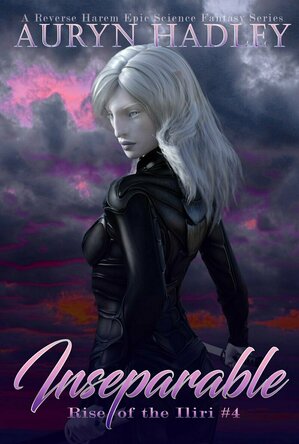
Inseparable (Rise of the Iliri #4)
Book
DISASTER! THE BLACK BLADES DISBANDED, AN ALLIANCE IN TURMOIL... Growing ever more tender yet always...
